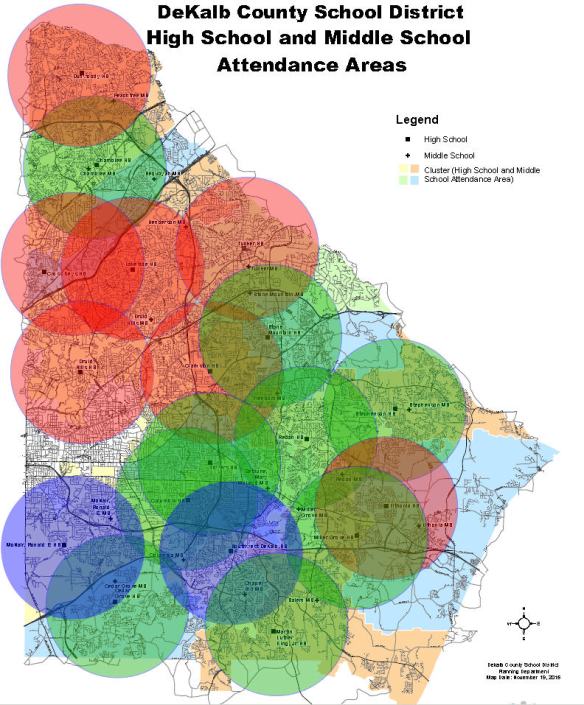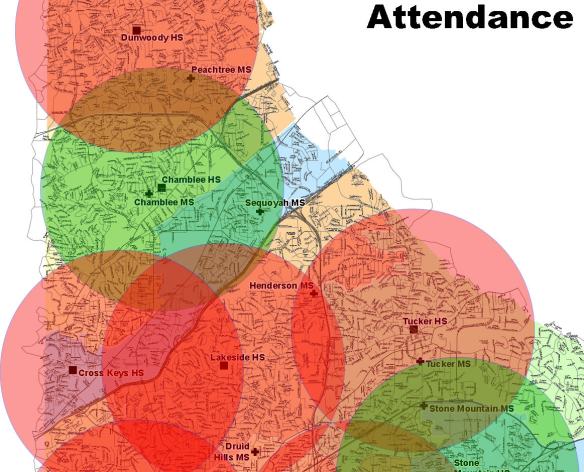In my last post, I noted the gap between the scores we had become accustomed to seeing with the CRCT tests and the scores from the national standardized tests, and noted that the (much lower) scores from the new Georgia Milestones tests are probably more closely aligned to the national tests. I then noted how poorly we had performed on those tests.
And therein lies another problem. Because if the Milestones results are accurate, then the press release from the school system touting our improved graduation rate doesn’t seem possible.
Something doesn’t add up.
Previously, I looked at some of the reported gains in graduation rate at our high schools, taking special note of the 20 point gain at Miller Grove High School. That jump seemed out of the ordinary, but with no standardized test to compare results against other schools, there was no way to confirm that.
Now we have the numbers.
But before we look at the 2015 results, it’s useful to obtain a baseline by looking at the 2013 and 2014 numbers. Taking the graduation rates at schools reference in the prior posts, and plotting them against the End of Course composites we get the following:
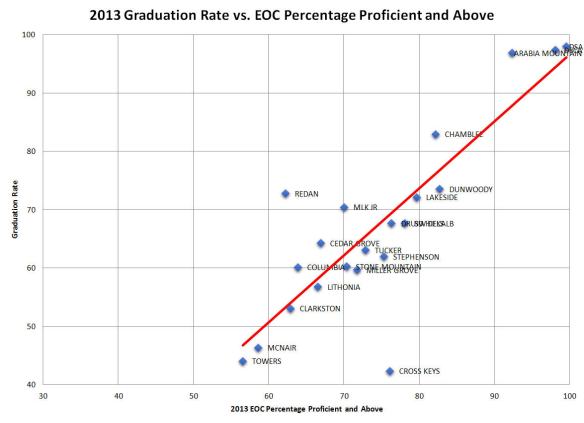
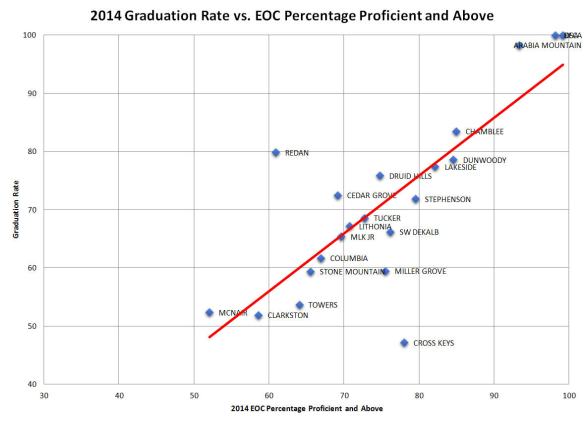
What does this show us? For most schools, there is a rough correlation between students passing the End of Course tests and the graduation rate. This isn’t surprising; the End of Course tests are used as the final exams and count for 20% of the grade for the course.
Miller Grove shows up in 2013 as being in line with the other schools, and being on the low end of graduation rate in 2014.
However, there are two things that jump out on these graphs.
The first is Cross Keys. Cross Keys scored in the middle of the pack on the standardized tests, yet the graduation rate is the lowest of the schools considered. The data implies that these students should be performing better than they are. There’s more to the picture then just the what the numbers indicate.
One major contributing factor is most likely the underlying demographics at Cross Keys. They have a highly transient population. Even though DeKalb County Schools are doing a much better job of tracking where students go when they leave a school, there is nothing they can do if the child is moved out of state and the parents don’t officially withdraw them from the school. Those students count as dropouts and Cross Keys ends up with a lower graduation rate even if those kids eventually graduate somewhere else. Even if we improve performance across the county, I suspect Cross Keys will consistently track 10-20 points lower in graduation rate until the underlying demographics change.
The second, more puzzling, outlier is Redan. Redan had higher graduation rates than the bulk of schools in DeKalb County, yet had the third lowest percentage of students who met the CRCT standards. The schools surrounding Redan (Lithonia, Stone Mountain, Stephenson, Clarkston, and yes, Miller Grove) all fall closely along the trendline. Yet Redan stands out. In the immortal words of Buffalo Springfield, “There’s something happenin’ here…”
It appears that the students at Redan performed much better on the remaining 80% of their coursework than their peers did. It would be interesting to learn what the teachers did differently at that school.
But enough about the past. It’s 2015. And the Milestone tests don’t count toward the grade. What do the numbers tell us now?
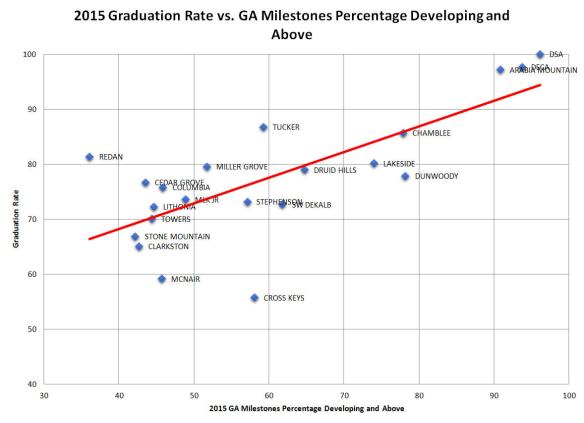
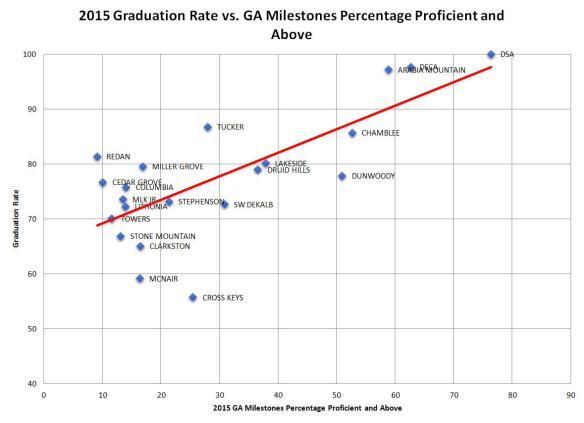
We will take a look at the “Developing Learner” ranking first. It uses the same horizontal scale as the previous two graphs and is the closest we get to being able to compare against the “meeting or exceeding” standards category of the CRCTs.
First off, the slope of the trendline changed. This is because just about every school had a higher graduation rate.
This is not surprising. When you get to determine your own success criteria, you get better than average results even if that doesn’t reflect reality. That’s one of the reasons we dropped the CRCTs.
Second, rather than being evenly distributed along the trendline, there is a cluster at the low end, which is even more pronounced when looking at the second graph, which uses the “Proficient Learner” criterion. The majority of our schools aren’t showing proficiency.
As mentioned above, something doesn’t add up.
I had questioned before if Miller Grove’s jump in graduation rate would be supported by the Georgia Milestones scores. Arguably, they are supported. While its graduation rate showed a large increase, the end results are not horribly out of line. It may simply have been a case of having abnormally low graduation rates in 2014 and now reverting to the mean.
Looking at the data shows the outlier.
Redan has the worst scores of all the schools in the county, other than the alternative schools. Yet it manages to have the 6th highest graduation rate. This juxtaposition of low test scores with high graduation rates is similar to what we saw with the CRCT results.
Once may be an anomaly. Twice could be a coincidence. Three years running is a pattern. Something really doesn’t add up.
In general, outliers are worthy of additional examination to find out why they behave differently. We can explain Cross Keys. Dr. Green’s administration would do well to try to understand what’s happening at Redan.
